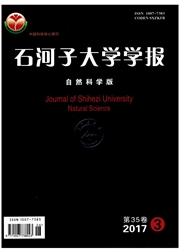

 中文摘要:
中文摘要:
褐翅猪毛菜(Salsola korshinskyi Drob)广泛分布于新疆准噶尔荒漠,具有很强的抗旱,抗盐碱能力。本文研究了褐翅猪毛菜种子类型及不同种子类型的萌发特性,以了解其适应荒漠环境的机制。结果表明:褐翅猪毛菜有3种不同类型的种子,其大小、质量、翅和着生方式均有显著差异。A型种子,圆形,果翅较长,黄褐色,种子横生,直径为(1.299±0.096)cm,单粒重为(6.95±0.023)mg;B型种子,圆形,果翅较短,黄褐色,种子横生,直径(0.683±0.111)cm,单粒重为(4.26±0.012)mg;C型种子,椭圆形,无翅,种子直立,直径(0.256±0.047)cm,单粒重为(3.74±0.008)mg。在0℃/10℃、5℃/15℃、10℃/25℃、20℃/35℃(暗12 h/光12 h)变温条件下3种类型种子具有不同的萌发特性:在每个变温条件下,A型种子的萌发率都最高,其次为B型,C型最低。对于A、B型种子,去翅能促进种子萌发。黑暗条件对种子萌发有抑制作用,对A型种子的作用较为明显。冷藏能促进A型种子萌发,对B、C型种子作用不显著。当沙埋深度为0和1 cm时,种子出苗率较高,然后随着埋深的增加而减小。种子萌发不能响应3 mm的降水,在降雨为20 mm时出苗率最高。以上研究表明褐翅猪毛菜种子萌发对温度变化不敏感,只要有适量的降雨,就能萌发,这种萌发对策对适应干旱、降水异质性波动等荒漠环境具有重要意义。
 英文摘要:
英文摘要:
Sahola korshinskyi.widely distributed in Junggar Desert,has a strong drought and salt-tolerance capacity.We studied the seed polymorphism characteristics and seed germination of Sahola korshinskyi.It produces three types of fruits(utricles) that differ markedly in shape,size,mass,wing and external structure.Type A fruits are spherical and tawny,with long wings. Type B fruits are spherical and tawny,with short wings.Type C fruits have no wings.All of the three types of seeds germinated in incubators with 12 h photoperiod and 12 h thermo-periods(dark/light) of 0℃/10℃,5℃/15℃10℃/25℃,20℃/35℃for 20 d.Germination percentages of type A seeds were the highest at all four thermo-periods.Germination percentages of type B seeds were lower than type A,and higher than type C.Dark condition restrained the germination most significantly for type A.Refrigeration promoted germination of type A and type B.and had no significant effect on type C.Germination percentages were high when the burial depths were 0 cm and 1cm,and increasing burial depth reduced the germination percentage.The seed germination could not respond to 3 mm of rainfall,and the highest seedling emergence occurred at 20 mm rainfall.Conclusion: the seeds of Sahola korshinskyi Drob are sensitive not to temperature but to rainfall.This germination strategy is significant for the plant to adapt to the desert environment with drought and precipitation heterogeneity fluctuations.
 同期刊论文项目
同期刊论文项目
 同项目期刊论文
同项目期刊论文
 期刊信息
期刊信息
